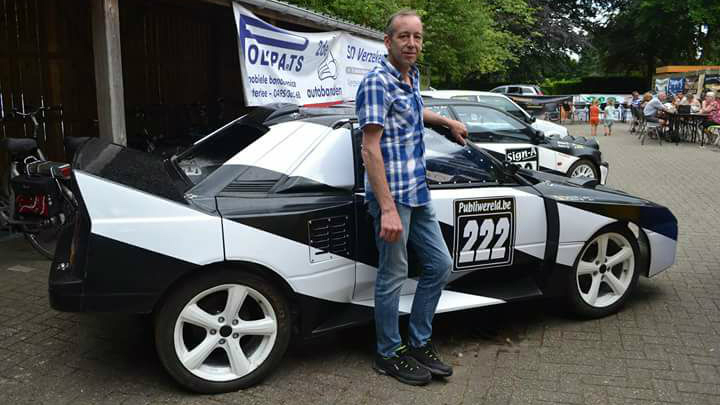

This story starts all the way back in the 1980s. FIA Group B rally reached a point where its unhindered development and exploding popularity meant that fatalities of drivers and spectators were beginning to stack. The planned successor to Group B, called Group S, was meant to reign in speeds with a lower horsepower limit, and allow for a prototype-like series with fewer required homologation cars, reducing costs. With Group B’s cancellation, Group S became collateral damage, as it too was axed, and the cars already developed by Group B participants Lancia, Audi, Ford, Peugeot, Toyota, and Opel for Group S were made purposeless.
One of those cars was Toyota’s MR2-based 222D.
The 222D never raced, and officially disappeared for two decades, before finally appearing in a showcase drive for the 2006 Goodwood Festival of Speed. The question of how competitive the 222D would have been, and whether homologation variants would have been available to MR2 customers has intrigued rally fans and the MR2 community alike for decades now. With the project incomplete, those questions could never be answered, but it hasn’t stopped some MR2 owners from trying to replicate the 222D.
One Belgian man, by the name of Wim Hapers, inspired by the mythical Toyota, set out to build his own 222D. After finishing his replica of the Toyota TRD2000GT, a rare, factory wide body conversion that paid tribute to Toyota’s GT-C cars, he settled in trying to build another wide-bodied MR2, but this time, on the first generation, the AW11. He already had loads of experience building wide-bodied cars, sometimes adapting panels to fit cars they were not made for, but he had never built a wide body from scratch.
“Some friends who I talked to about my plans said I should build a 222D,” said Hapers to The Drive, “but they also told me I couldn’t do it, as nobody ever made a good looking one. It was then I decided I would build it.”
Hapers had to start the project by overcoming the first of many hurdles: he needed to learn metalworking to make the buck—a sort of mold, on which the panels are constructed—from iron. With no official reference materials of any kind, as information on the 222D is already sparse, Hapers had to base his build entirely on photographs of the car available on the internet. He estimated measurements based upon known dimensions, such as those of the door handles and taillights.
“It’s not a perfect replica,” said Hapers, “it’s not easy building a car from pictures alone, but by trial and error, I made it like it look good enough for me”
When asked if the replication would extend to the entirety of the car, Wim couldn’t say for sure.
“”For now, it will only be the body. Budget and space prevent me from doing a full replica. Maybe in the future I’ll build a replica chassis for it.”
Where does the project stand now, and where’s it going? It will eventually be a racer, like the car it is inspired by, as Belgian law regarding the use of homebuilt cars on public roads is rather restrictive.
“Here in Belgium, it’s not legal to daily this kind of build,” said Wim, “I will use it for hillclimb races, and maybe some rally demonstrations.”
For now, though, this 222D is little more than a pretty paperweight, as Wim says it doesn’t run yet.
“Parts are expensive, and I need lots of them. Only the body is ready, it doesn’t drive at the moment. As it’s going to be a hillclimb car, I am looking for a roll cage now. The goal is to make it drivable, so I can start enjoying my years of work. Maybe later, I can build another one with a completely homebuilt frame.”
Given the investment of time an effort into this project, I figured it only made sense to ask Wim if he planned to make additional replica bodies, for sale to interested buyers. As it turns out, he never set out to make a conversion kit to sell, but enough people asked him that he made one complete extra conversion, and plans to sell as many as buyers ask for.
“I didn’t want to put the kit up for sale, but I had to do it. Sold one kit already, and hope to sell more so I can get the funds to complete mine.”
The Drive will watch Wim Hapers’ build progress, and we will be glad to report to the world when the car is racing up the slopes and down the gravelly back roads of Europe. Those interested in following Wim’s progress more intimately can follow the project’s Facebook page. I reached out to Toyota for comment, but none has yet been returned.